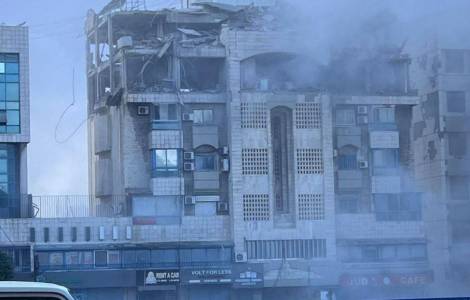Beirut – “New Order” was the name of the operation that killed Hezbollah leader Hassan Nasrallah: the name given by the Netanyahu government to the Israeli operation to kill Nasrallah indicates the intention not only to change the balance of power in the Middle East, but also to re-organize the political framework of the region. The attempt was already made after the attacks of September 11, 2001, when US President George W. Bush declared the great war against terrorism. After invading Afghanistan under the pretext of finding Bin Laden and the leaders of Al-Qaeda, the Bush administration targeted Saddam Hussein’s Iraq because of the alleged presence of weapons of mass destruction, the existence of which has not been proven to this day.
However, according to Wesley Clark (NATO Supreme Commander from 1997 to 2000), published in his 2003 book and in a 2007 television interview, one month after the September 11, 2001 attacks, the Pentagon had plans to launch further attacks on seven Middle Eastern countries within five years after invading Afghanistan: Sudan, Somalia, Libya, Lebanon, Syria, Iraq and Iran.
The invasion of Iraq led to the overthrow of Saddam Hussein’s regime and the installation of an American-led interim government to lead the country to “democracy.” The elimination of the Sunni-led Baathist regime (and in particular the original clan of Takrit, Saddam’s hometown) paved the way for ethno-religious claims. The Shiites in particular, who make up 60% of the population, claimed control of the executive executive, while the Kurdish regions were granted extensive autonomy. A bloody civil war followed, leading to the withdrawal of most of the military contingents of the international coalition that was supposed to help Iraq on the “road to democracy”.
Meanwhile, the 34-day Lebanon War between Israel and Hezbollah in the summer of 2006 was marked by a failed attempt to reduce the military component of the Lebanese Shiite organization. The Second Lebanon War was described by then-US Secretary of State Condoleezza Rice as the beginning of a “new Middle East”.
Combined with the difficulties on Iraqi soil (not to mention Afghanistan), Israel’s failure in Lebanon had prompted American decision-makers to change strategy. No longer a massive direct military engagement, but targeted actions to contain the jihadists on the one hand and to open up to the Muslim Brotherhood in the Sunni world and to the Islamic Republic of Iran in the Shiite world on the other.
This was the strategy of the Obama administration on the wave of the so-called “Arab Spring” (it should be noted that its initiators included young people who had taken courses on non-violent uprisings run by American and international NGOs) that led to the fall of the regimes of Bel Ali in Tunisia and Hosni Mubarak in Egypt in January 2011.
At the same time, Obama signed an international agreement with Iran to ensure that Tehran’s nuclear program would not lead to the production of nuclear weapons.
In Syria, things went differently: the violent repression of the first demonstrations by the Syrian regime quickly led the country to slide into civil war. Far from being a war between the government and the rebels alone, the Syrian conflict soon became a mosaic of wars with the direct involvement of major powers and regional states. A kind of mini-world war was being fought over Syria. The United States’ Arab allies disapproved of the democratic government’s strategy of opening up to the Muslim Brotherhood, which Obama had announced in his 2009 speech at Cairo’s al-Azhar University. This went so far that in 2013 the military coup that overthrew the Egyptian government democratically elected in 2012 under Mohammed Morsi, a representative of the Muslim Brotherhood, was supported by Saudi Arabia and the United Arab Emirates. The differences between the allies finally manifested themselves in the Syrian conflict, with the support of various armed groups, including jihadist ones, by the various powers, which, instead of overthrowing the Assad regime, caused further chaos. Assad sought help from Iran, Hezbollah and the Russian Federation, which enabled him to regain control of several areas of the country and, above all, to remain in power in Damascus.
Another U-turn came with the Trump administration, which withdrew from the nuclear deal with Iran and launched the so-called “Abraham Accords,” which aim to achieve a de-facto alliance between the Sunni monarchies and Israel with external support from Washington.
The agreements were “frozen” after Hamas’ attack on Israel on October 7, 2023. The war in Gaza is just a first stage in the Israeli government’s strategy to redraw the map of the Middle East by attacking the Shiite axis around Iran. Addressing the Iranian people (whom he refers to as the “Persian people”), Prime Minister Netanyahu said: “When Iran is finally free, and that time will come much sooner than people think, everything will be different. Our two ancient peoples, the Jewish people and the Persian people, will finally live in peace. Our two countries, Israel and Iran, will live in peace.”
But in the meantime, the two countries are dangerously close to a direct confrontation that threatens to drag the entire region into a regional war involving the major powers.
By Luca Mainoldi | Fides






